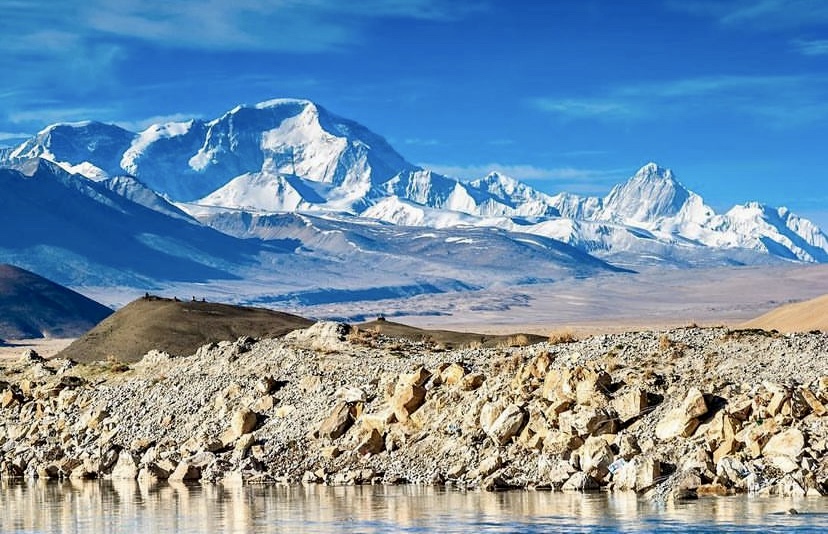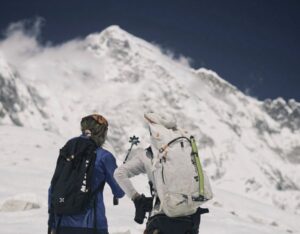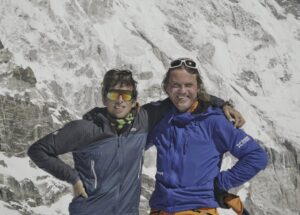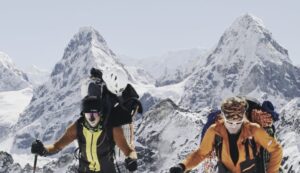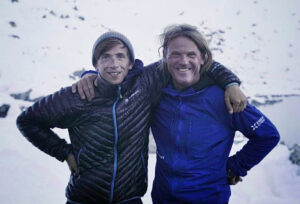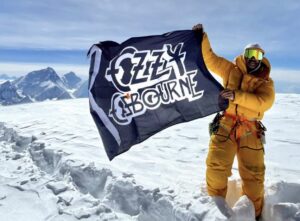At 8,188m, Cho Oyu is the sixth-highest mountain in the world. Located 20km west of Everest, it sits astride the border of Tibet and Nepal. We already wrote a brief climbing history of the mountain, and today we will look at climbing routes on the Tibetan side of this so-called Turquoise Goddess.
The various climbing routes on Cho Oyu include both the southern (Nepalese) and northern (Tibetan) sides of the peak. The normal route goes up the northwest side in Tibet. Of all the ascents of Cho Oyu, less than 100 have taken place on routes other than the normal one.
Several teams are already on Cho Oyu this autumn, as China reopens the mountain to foreign climbers. But climbers will need to stick to strict rules: You must use bottled oxygen from 7,000m up, and no solo climbers are allowed.
This autumn, one Russian team is climbing from the much more difficult south side.
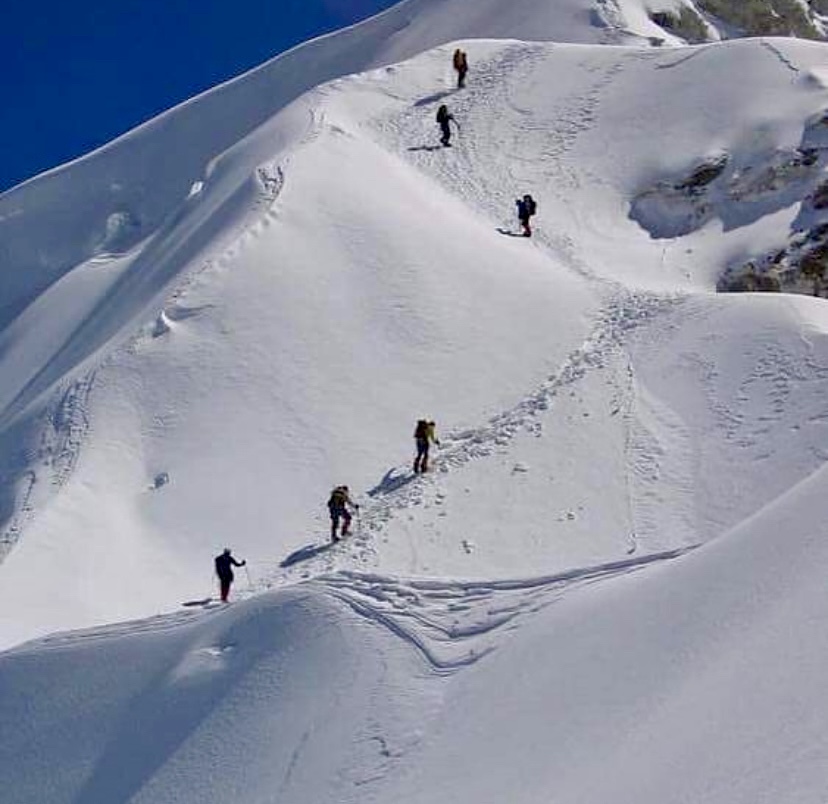
Camp 1 to Camp 2 on the Tibetan side of Cho Oyu. Photo: Tony Van Marken
Nangpa La
Nangpa La (5,716m) is a high mountain pass crossing the Nepal-Tibet border a few kilometers west of Cho Oyu. A route along Nangpa La was the traditional trade and pilgrimage route. In the spring of 1951, a UK-New Zealand party led by Eric Shipton crossed the pass but did not attempt the mountain.
One year later, Shipton and a team, including Edmund Hillary, returned. They crossed again and reached 6,800m on the first attempt to climb Cho Oyu.

Nangpa La and Cho Oyu’s summit marked in red. Photo: Himalaya-info.org
The first ascent
Cho Oyu was first ascended on Oct. 19, 1954. An Austrian party led by Herbert Tichy summited via the northwest face after approaching via Nangpa La. Herbert Tichy, Sepp Joechler, and Pasang Dawa Sherpa reached the top without supplemental oxygen. For a first ascent of an 8,000m peak, that was unusual.
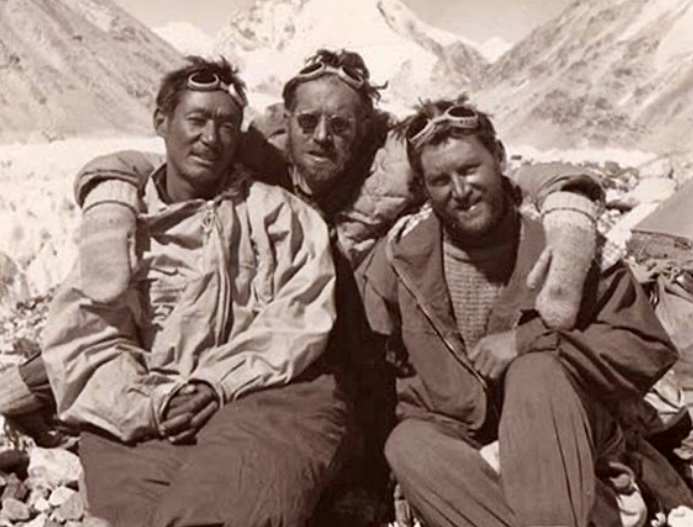
Pasang Dawa Sherpa, Herbert Tichy, and Sepp Joechler. Photo: Herbert Tichy
North face and north ridge
On Nov. 2, 1988, Iztok Tomazin (climbing with a Yugoslavian team) reached the summit via the north face. He descended by the west ridge/west face. Two more team members, Viktor Groselj and Joze Rozman, topped out on Nov. 5. Their route was a slight variant, climbing to the right of Tomazin’s route from 7,500m. More climbers summited a few days later.
On Sept. 28, 1996, Catalan climber Oscar Cadiach and Austrian Sebastian Ruckensteiner opened the Free Tibet route on the previously unclimbed north ridge. They completed the steep (45° to 75°) line in alpine style from Palung La at 6,500m. During their summit push, they left their high bivouac at 7,500m at 9 am and topped out at 6 pm the same day.
After summiting, they returned to their bivy at 10 pm before joining the standard route to reach their advanced base camp.
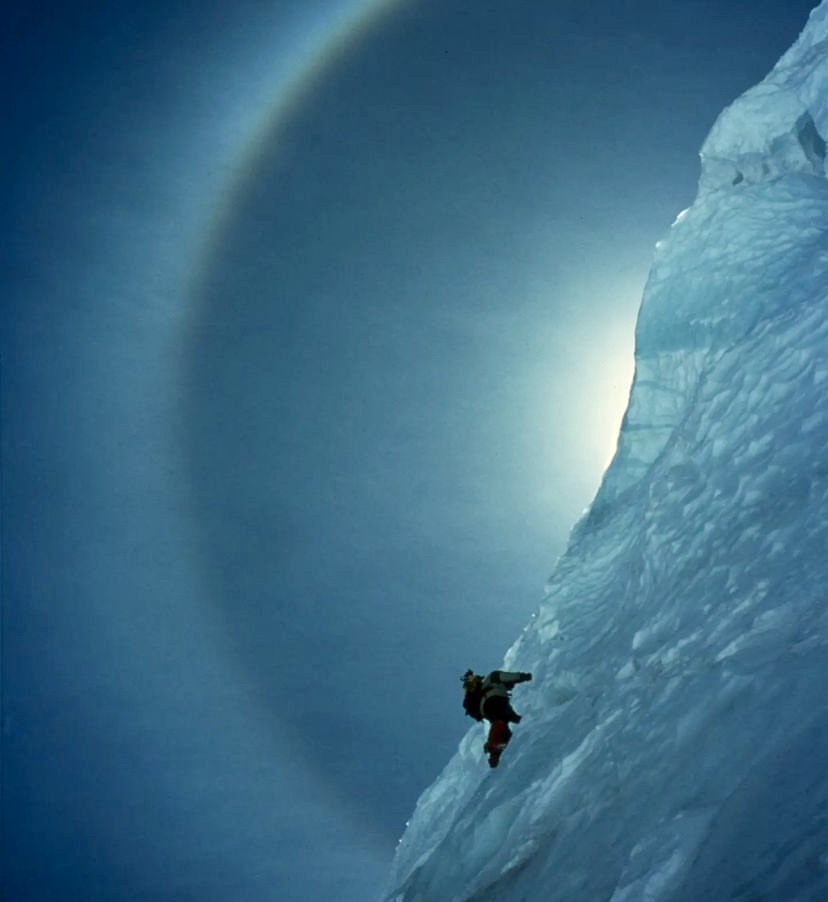
Horst Fankhauser at 6,500m on the Tibetan side of Cho Oyu. Photo: Alexander Huber
On May 21, 1997, Russian Georgi Kotov and William Pierson from the U.S. summited via a new route. They ascended by the north ridge from the west after 1,000m of new climbing on the north side of the peak.
Partial northeast face route
In the spring of 2001, Austrian Christian Stangl made a variation of the normal route. On Sept. 21, Stangl headed to Camp 1 and started up the northeast face to 7,400m. The last part of the section was too difficult because of powder on the rock face, so he descended to 7,000m. Under some big seracs, he traversed west and joined the normal route at 6,800m. On Sept. 23, Stangl reached Camp 3 on the normal route at 7,500m. From there he ascended to the summit, topping out on Sept. 24.
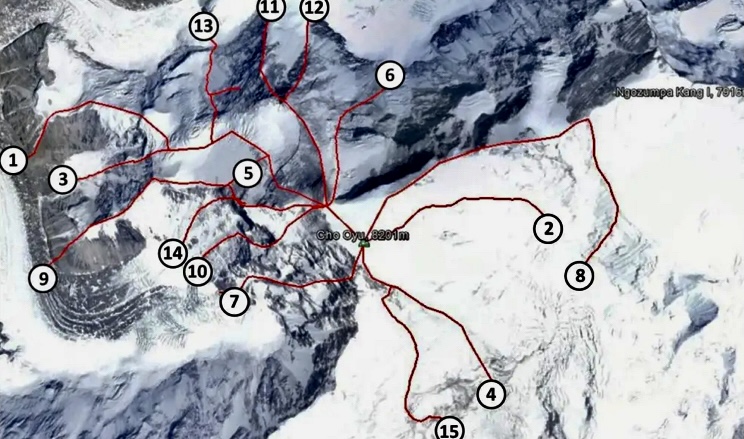
Climbing routes on Cho Oyu. Number one is the 1954 route. Six is the 1988 north face route. Eleven is the 1996 north ridge route. Twelve is the 1997 route. Thirteen is Stangl’s 2001 partial variation route. Photo: Animal de Ruta blog
